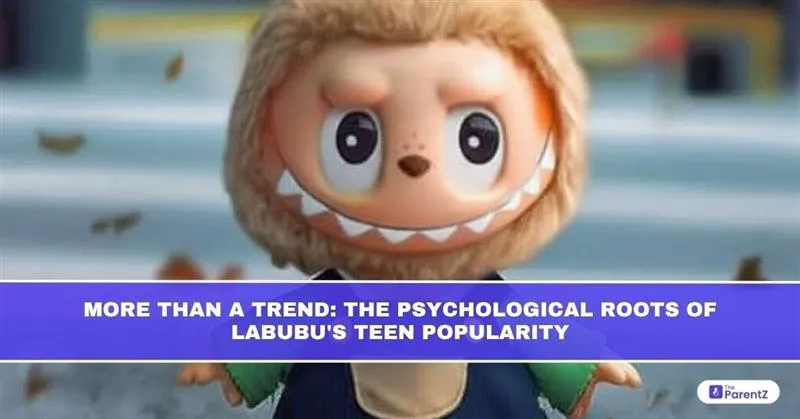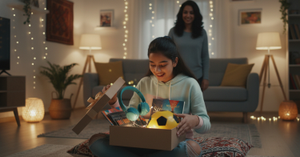Labubu started as a niche collectible but has evolved into a global sensation among teens and young adults. These mischievous, fuzzy creatures characterized by oversized eyes, rabbit-like ears, and jagged grains are now clutch accessories on backpacks and designer handbags. Behind this surge lies a complex interplay of nostalgia, identity, digital culture, and strategic marketing.
The Blind-Box Magic: Surprise, Scarcity, and Social Status
Labubu’s rise is inseparable from Pop Mart’s “blind-box” model. Teens eagerly buy sealed packages, hoping to pull rare or limited-edition variants. This gamification taps into human reward systems, mirroring dopamine spikes tied to unpredictability and the thrill of discovery.
Limited drops and “secret” variants intensify FOMO (fear of missing out), making Labubu not just a toy, but a collectible currency in teen social circles. With rare figures fetching hundreds or even thousands online, the toy becomes a status symbol like having the newest sneaker drop or viral accessory.
Ugly‑Cute Aesthetic Hits the Gen Z Sweet Spot
Labubu’s look is deliberately “ugly‑cute”, a sharp-toothed, fuzzy little monster that’s both adorable and mischievous. This aesthetic stands in stark contrast to polished, traditional cuteness, authentically resonating with Gen Z’s ironic sensibilities.
It’s more than visual appeal: the toy embodies teenage duality, sweet yet edgy, comforting yet rebellious, a reflection of internal emotional landscapes teens often navigate.
Celebrity Endorsement and Social Proof
When K‑pop star Lisa of BLACKPINK was spotted with a Labubu charm, the toy instantly gained global recognition. Followers saw it as a badge of trend awareness, an aesthetic choice loaded with cultural cachet.
It wasn’t just Lisa: Rihanna, Dua Lipa, and David Beckham have all been photographed carrying Labubus, reinforcing its status as a must-have accessory. Teens love being part of a moment, and celebrity validation makes Labubu a highly shareable expression of belonging to youth culture.
Community, Identity and Creative Play
Buying Labubu isn’t just shopping, it’s joining a global community. TikTok is filled with unboxing videos, style check posts, and mini fashion shoots featuring Labubu. These creations are content gold, helping teens participate in dialogue around collective aesthetics.
The toy’s blank canvas quality invites creativity, custom outfits, themed photoshoots, personal displays. For many adolescents seeking self-expression and belonging, Labubu becomes both a companion and a persona in online subcultures.
Emotional Comfort and Kidult Nostalgia
In a stressful era filled with academic pressure, social media critique, and uncertain futures, teens gravitate toward comforting rituals like collecting plushies. Labubu’s “kidult” charm brings back childhood joy and tactile comfort, offering psychological relief and emotional grounding.
The unpredictability of blind boxes mimics childhood anticipation of holiday surprises, a contrast to today’s instantaneous digital gratification.
Cultural and Cross‑Generational Fusion
Labubu is more than a toy; it’s a cultural hybrid. Originating from Kasing Lung’s Nordic-folklore inspired “Monsters” story series (2015), it gained mass appeal through Pop Mart’s collectible platform.
Its journey from niche art toy to mainstream fashion accessory bridges collector, art, and youth cultures. This reflects Gen Z’s penchant for cultural remixing, mixing folklore origins, niche universes, and luxury contexts into one accessible symbol.
The Business of Hype: Teaching Teens Consumer Savvy (and Vulnerability)
Pop Mart’s strategy is brilliant yet ethically ambiguous: creating artificial scarcity, feeding FOMO, and encouraging repeat purchase cycles. This mirrors tactics in streetwear and collectibles marketing.
While this provides engagement and community, it also risks promoting hyper-consumerism. Teens are drawn to the chase and may face disappointment, inflated prices, or counterfeit issues. It’s a teachable moment on media literacy and mindful collecting.
In Summary
Labubu’s meteoric rise among teens isn’t accidental; it’s the product of psychological resonance, savvy marketing, cultural remixing, and digital community building. It reflects how Gen Z seeks belonging, emotional anchors, personal expression, and meaningful rituals in a fragmented world.
For parents, the Labubu craze offers insight into today’s youth: their struggles with digital overwhelm, desire for authenticity, and craving of creative expression. Rather than dismiss it as a frivolous toy, recognizing the deeper appeal of Labubu can open up meaningful conversations:
- Ask what the toy means to them: comfort, creativity, status, or all of the above?
- Watch spending habits: are they chasing rare drops or simply doting on a playful accessory?
- Encourage balance; this trend can spark joy and connection, but also consumer pressure.
- Explore creativity, invite them to show you their collection, stories, or crafty customization ideas.
Labubu isn’t just a trend; it’s a cultural mirror reflecting Gen Z’s complexities: playful yet anxious, nostalgic yet bold, belonging-seeking yet individualistic. Understanding this trend helps us understand our teens and maybe even reconnect with our own inner child in the process.








Be the first one to comment on this story.